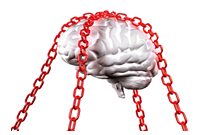 Why is it we always seem to fail back into the same traps or pitfalls?
Why is it we always seem to fail back into the same traps or pitfalls?
Bad habits seem to always reoccur even when we work on trying to eradicate them.
Or we ignore the warning signs that were ‘signalling’ the problem until it is too late?
For me, innovation has eight possible pitfalls or sinkholes that we need to consciously try to avoid. Some are in our hands, others are clearly out of our hands but all we can do is try to be aware of them so we can avoid them as best we can. We sometimes need to be more prepared for these traps based on our judgement and experience.
We need to become more explicit Continue reading “Eight possible pitfalls or sinkholes around innovation”



